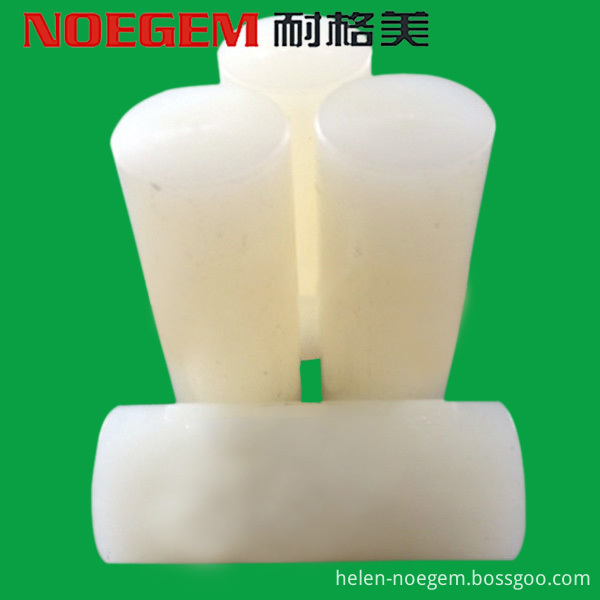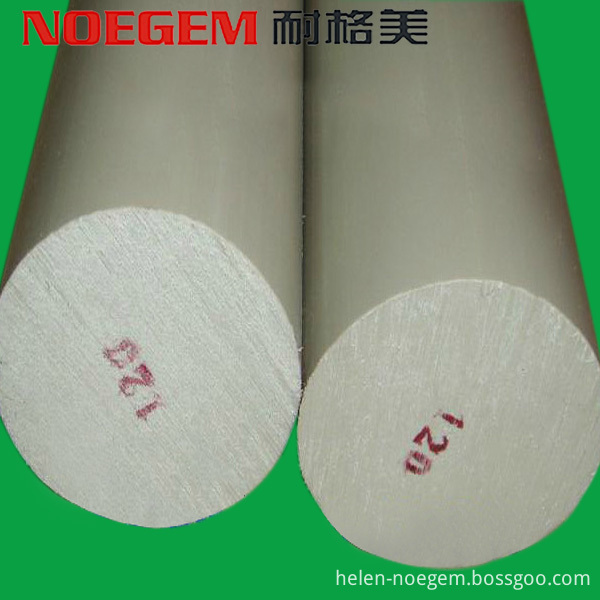(1) Product quality standards In China's national standard for gypsum and anhydrite in cement (GB-5483-85), gypsum and anhydrite are classified into three grades according to their grades (grades are: greater than or equal to 80%, greater than or equal to 70) %, greater than or equal to 60%), and stipulates that it must not contain impurities harmful to the performance of cement and mixed with foreign inclusions, and the required water should not exceed 4%. The ministerial standards formulated by the Ministry of Construction Materials Industry of China stipulate that the grades of medical, edible and art plasters are above 95%, the grades of plaster for building products and models are above 75%, and the grades of cement and agricultural gypsum are above 55% (see JC16 for details). -82), and the gypsum ore block is not more than 500mm, and the gypsum attached water content is not more than 5%. (2) Processing method of mineral processing Although heavy medium beneficiation, photo-selection, flotation, electro-election, etc. can be used for gypsum beneficiation, in China, these methods have not been widely used in industrial production. Most mines simply pick the gypsum ore that is mined and pick up the stone. Some mines with more complex ore types are selected by hand to extract fiber gypsum, plaster, ordinary gypsum and a small amount of anhydrite. The calcination process of raw gypsum is divided into dry process and wet process. Dry calcination is the heating and dehydration of raw gypsum under normal pressure (or low partial pressure of water vapor), and β-type hemihydrate gypsum, type II anhydrite or burnt gypsum are formed depending on the temperature. This product is a plaster, cast gypsum or pre-product gypsum commonly used in construction. The wet calcination is to heat the raw gypsum under the pressure of water vapor in the autoclave or in a salt solution having a boiling point higher than 100 ° C at a low pressure, and the product is α-type hemihydrate gypsum, which can be used as a special gypsum base material for pouring. . (3) Process The production process of β-type plaster is generally: ore storage → crushing → homogenization → calcination dehydration → aging → grinding and mixing → packaging, first calcined with a wok and then calcined. The raw gypsum dry calcination process is as follows: raw gypsum is transported and selected from the quarry to ensure continuous feeding and stable quality. The feedstock is subjected to a section of crushing ( chopper crusher ) to below 8 cm, and then to a second stage of crushing ( hammer crusher ) to less than 2 cm, and then calcined into a calcining kiln through a bucket elevator. By controlling the temperature of the kiln, β-type hemihydrate gypsum, anhydrite gypsum and burnt gypsum can be separately produced. The α-type wet calcination process and process are generally: gypsum raw material warehouse → sieving machine → autoclave autoclaving and drying → broken pulverization → homogenization storage → α and β gypsum mixing → packaging and handling. The process for producing α-type hemihydrate gypsum by hydrothermal method is: Gypsum ore → crushing → milling → reaction kettle (adding water and chemicals) → cleaning → dehydration drying → packaging. (4) Common technical equipment Commonly used equipment for gypsum crushing are jaw crusher , cone crusher , impact crusher, roller crusher, hammer crusher, etc. Dry calcination is commonly used in both direct calcination and indirect calcination. Direct calcination equipment such as rotary kiln, grinding and calcining integrated device (Peter mill, high temperature wind sweep, etc.). Indirect calcination equipment such as rotary calciner, wok (direct calcination of earth wok), horizontal calciner, vertical calciner, and the like. The wet calcination equipment includes a horizontal type, a vertical autoclave, a vulcanization tank, and the like. (5) Practice of mineral processing The process flow of raw gypsum dry calcination in the Gineng Gypsum Mine Gypsum Products Factory in Jingmen City, Hubei Province is shown in Figure 4.18.6. Raw gypsum is transported and selected from the mining site to ensure continuous feeding and stable quality. The feedstock is subjected to a section of crushing (chopper crusher) to below 8 cm, and then to a second stage of crushing (hammer crusher) to less than 2 cm, and then calcined into a calcining kiln through a bucket elevator. The rotary kiln adopts a downstream type, and by controlling the temperature of the kiln, β-type hemihydrate gypsum (180-240 ° C), anhydrite gypsum (350 ° C) and burnt gypsum (450-700 ° C) can be separately produced. After the calcined calcined gypsum is homogenized, it is ground to 200-325 mesh by a pendulum mill, and the pendulum mill is a 4R-3216 produced by Guilin Mining Machinery Factory. 1. jaw crusher; 2. hammer crusher; 3. raw material silo; 4. transport machine; 5. rotary kiln; 6. bucket elevator; 7. transport aircraft; 8. clinker silo; Crusher; 10. bagging (6) Main types and uses of deep processed products Gypsum powder Used in cement production as cement retarder, special cement raw material; used in chemical industry for sulfuric acid, ammonium sulfate, etc.; used in agriculture to improve soil or soil fertilizer; paint, pigment, paper, textile and other industries Used as a coating and filler and as a filler for industrial products such as toothpaste, cream and chalk, and as a carrier for pesticides; used in the food industry to purify water in breweries, to control the clarity of wine, or to coagulate edible tofu Agents and animal feed additives. Finely ground gypsum powder can be used to clarify turbid sewage, oil refining, polishing glass and some precious metals, and other decorations. Naturally pure anhydrite powder can also be used as a flux in the glass industry in place of sodium sulfate. Raw gypsum is also known as condensate stone, (Taiyin) mysterious stone, salt root, etc. in ancient Chinese books. It has been used as a traditional Chinese medicine stone since ancient times. It has the effects of slowing the spleen and replenishing qi, quenching thirst and removing fire, and relieving hunger and sweat. 2. Plaster powder Used in the construction industry as a stucco material for building walls, plastering materials and prefabricated parts for making plaster, which can be made into gypsum board, building partition wall, ceiling and other various gypsum prefabricated parts of various specifications; Used in the ceramic industry for the production of various ceramic molds; for the manufacture of molds in the foundry industry; for the manufacture of dental molds or surgical fixations in medicine. In the arts and crafts can be used as an art statue. 3. Gypsum products Gypsum board has been an important wall material at home and abroad, including gypsum board, decorative gypsum board, fiber gypsum board, gypsum composite board, gypsum slag board, gypsum particle board, etc. Gypsum block is also emerging as wall material, gypsum Products have been widely used in building materials worldwide. Because of its non-toxicity and many other advantages, it is known as green building materials and has broad prospects.
PP plastic, polypropylene, commonly known as "baijiao",Scientific name: polypropylene.
Description:
PP Plastic is a kind of semi crystalline material. It is more hard than PE and has a higher melting point. Due to the high crystallinity, the surface of the material stiffness and resistance to scratch characteristics very well. PP Plastic don't have the problem of environmental stress cracking.Polypropylene (PP Plastic) is a semi-crystalline thermoplastic.PP Plastichas high impact resistance, strong mechanical properties, resistance to many organic solvents and acid and alkali corrosion.
PP Plastic is widely used in industry and is one of the most common polymer materials.
Australian COINS are also made of polypropylene.
Polypropylene bonding:
K-720 is suitable for polypropylene PP plastic adhesion, suitable for large area plate lamination, high transparency, suitable for PP adhesion PP, PP adhesive PC, PP adhesive ABS,PP adhesive PVC, PP adhesive acrylic, PP sticky metal, PP stick wood.
K-7007 adhesion performance is roughly the same as k-720, light yellow and more economical.
K-620 is adhesive small area polypropylene PP glue, must be used with the k-650 treatment agent, the instant positioning, the strength is high.
Advantages:
1. Low density;
2. Heat resistance ;
3. Non deformation;
4. High stiffness;
5. High surface strength;
6. Good chemical stability;
7. Nontoxic and safe.
Disadvantage:
The main disadvantage of the fault polypropylene is that the high temperature rigidity is not enough, and the low temperature is brittle.
Poor environmental tolerance, outdoor use, easy to turn yellow and brittle.
Tensile strength of anisotropy, the products are easy to deform, continuous use of low temperature, high creep performance, and long - term load.
Poor printing performance.
Application:
1,Valve part, drinking water and sewage water pipe,
2,Sealing element, spraying carrier,
3,Corrosion-resistant trough and barrel, industrial applications that have acid and alkali-resistant requirement; wastewater and gas discharge equipment for industrial purpose,
4,Scrubbing tower, clean room, semiconductor plant and other related industrial equipment and machinery, food machinery and chopping board,
5,Electroplating process, toy part
Combustion characteristics: PP Plastic easy to burn, polypropylene from continue to burn after the fire, with the top of the flame is yellow, the bottom made in blue, with a small amount of smoke generated, burning melt dripping, and oil.
Specification: the thickness of PP sheet material can be produced from 0.3mm to 2mm, and the PP sheet material is of rolling material and width of 500-1000mm.
The thickness of the plate can be produced from 2mm to 200mm. The specification is 600*1200mm 1000*1000mm 1000* 2000mm. Other specifications can be customized as needed,and The diameter of the PP rod can be produced from 2mm to 250mm, the length is 1 meter, PP rod can be ordered to be more than 3 meters in length.
Color: white and black, other colors can be customized
Modified varieties: PP sheet have various enhancers and other auxiliaries can be added to make modified varieties, depending on the requirements
Storage methods:
Keep in tight, cool and dry place to ensure good ventilation
Product certification: most environmental certification reports and safety reports for raw materials, such as SGS report, CTI report, UL report, MSDS safety information, etc.
Pp Plastic Rod,Polypropylene Plastic Rod,Extruded Polypropylene Plastic Rod,Pp Plastic Welding Rods Dongguan Noegem Plastic Products Co.,Ltd , https://www.noegempLastic.com

